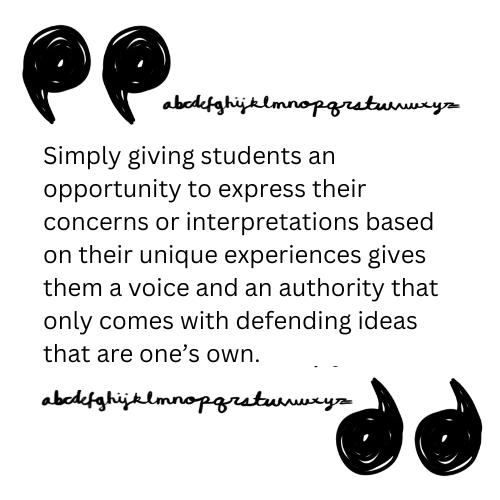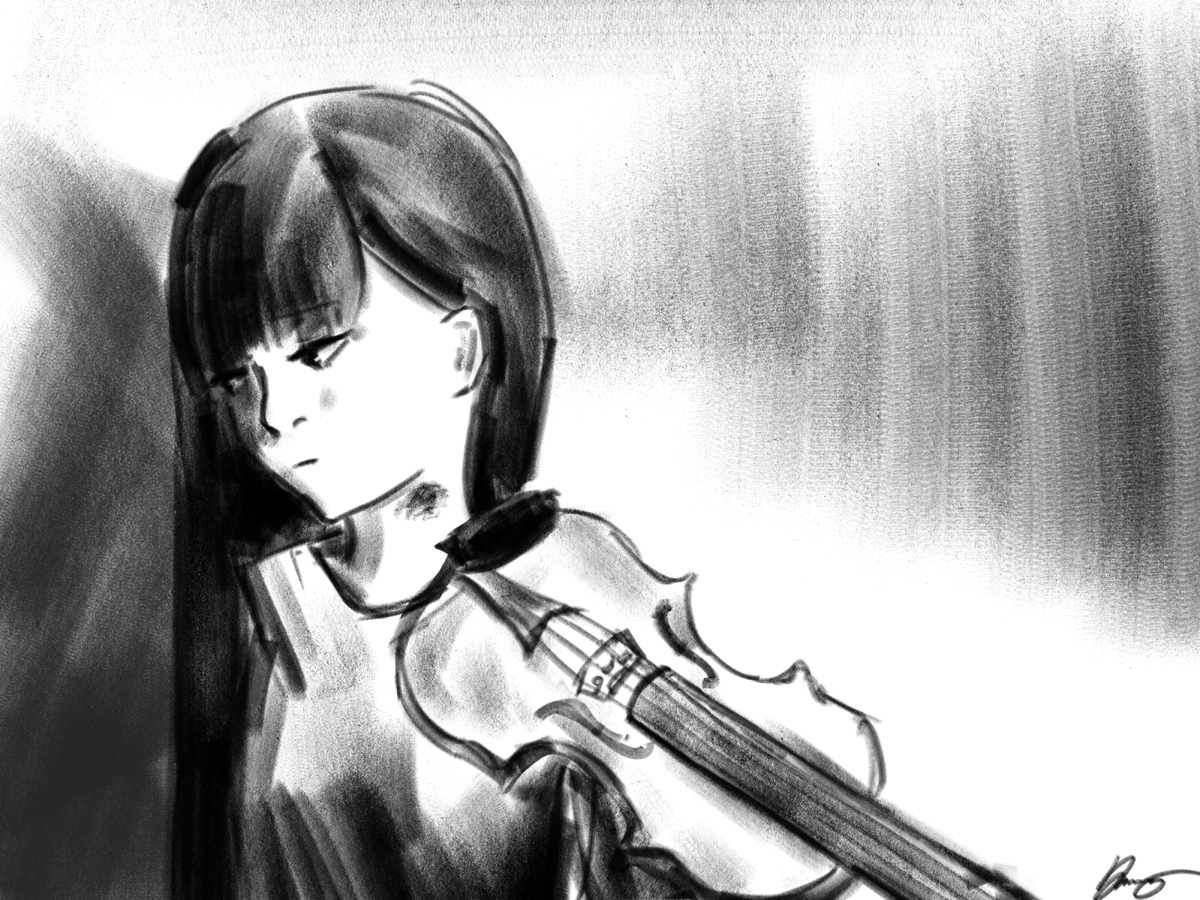Each year, MVHS students must take one literature course as part of their schedule. For both graduation and UC/CSU eligibility, four years of literature courses are strictly required. Consisting of writing assignments and the reading of modern and classic literature, MVHS offers a variety of literature courses, starting with regular Literature/Writing in ninth grade and higher-level courses like Honors American Literature (HamLiT).
High school literature courses generally employ similar writing styles or structures to help with analysis. All MVHS students are familiar with the traditional five-paragraph essay structure, complete with sentence and word limits and specific places to fit in a thesis, evidence and analysis. This formula is used to help students organize their thinking and analysis in a clean, logical way that makes analysis and grading more straightforward and has been the built-in standard for literature courses since middle school. However, the existence of such a formula actually limits students in many ways. It forces students to analyze texts traditionally and mechanically, to not fully explore their true thinking and to develop analysis skills in a way that is not stimulating or beneficial.
In literature classes, we are taught to analyze texts by looking for a central theme and then finding evidence to back it up. This traditional method of analysis is straightforward and logical but can result in students ignoring aspects of a text that aren’t relevant to their argument. Analyzing a text to make a concise and direct proclamation of its meaning doesn’t allow for the exploration of the text in full, including the multiple possible interpretations, nuances or even contradictions.
The difficulty of trying to express thoughts within such a limited structure prevents students from exploring their own ideas, the importance of which literature teachers and educational standards often emphasize. Sentence limits or the lack of a perfectly-suited quote can lead students to oversimplify or completely disregard an idea worth exploring in depth. This dilution of ideas can cause a lack of originality and humanity in students’ analytical writing, where students may be tempted to just regurgitate ideas discussed in class rather than use their own unique voice to analyze text in a way that is truly meaningful to them.
Writing without being able to fully express oneself can take away from the writing experience as a whole, and as students feel more disconnected from what they are writing, they may grow disinterested or dispassionate about the writing process. This creates a learning environment where students aren’t invested in their own learning or development of critical thinking skills, which is detrimental to both students and teachers as well as the quality of education students receive.
A 2021 study by Literacy Trust found that only 34.5% of children and young people say that they enjoy writing—the lowest percentage among students since 2010, further highlighting the potential negative impact of a lack of freedom in writing. These numbers are represented at MVHS as well, with 34.8% saying that they do not enjoy writing in a survey of 138 students. This is important to consider as there has been research showing that writing for enjoyment and self-expression improves overall mental well-being, which is something that many MVHS students struggle with.
Teachers and administrators are capable of taking steps to allow students to properly experience the benefits of writing while simultaneously learning analytical and critical thinking skills. They can weigh in to modify the current literature curriculum and present more meaningful assignments, starting with allowing students to choose what to analyze in a text, without a specific prompt or word limit and especially without a five-paragraph structure. Ridding analytical writing of specific structure requirements would allow students’ ideas to flow in conjunction with their thought process, giving students a chance to learn how to organize their own thoughts in a way that makes sense to them, and not just for the convenience of grading.
 Simply giving students an opportunity to express their concerns or interpretations based on their unique experiences gives them a voice and an authority that only comes with defending ideas that are one’s own. Instead of prompts or leading questions that already pick out what a student should analyze, teachers should provide questions like “How does this impact me?” “What does this mean to me?” “Why does this work this way?”
Simply giving students an opportunity to express their concerns or interpretations based on their unique experiences gives them a voice and an authority that only comes with defending ideas that are one’s own. Instead of prompts or leading questions that already pick out what a student should analyze, teachers should provide questions like “How does this impact me?” “What does this mean to me?” “Why does this work this way?”
While it may be a concern that modifying the MVHS curriculum to be less strictly structured would not adhere to the California Common Core standards properly, that is not necessarily true. According to the California Common Core writing standards for grades 6-12, the goal of literature courses is to develop analytical, research and critical thinking skills among students through analysis of texts and the use of evidence to support one’s analysis. The purpose of developing these skills is to “convey what students have experienced, imagined, thought, and felt to be college- and career-ready writers.” Nowhere in the standards does it mention the five-paragraph essay structure, or prompts and word limits. In fact, analyzing a text according to a student’s own interpretation and based on individual experience perfectly encompasses the idea of learning to convey individuality through analytical writing. In terms of college and career readiness, this style of writing also more accurately reflects how analytical writing works in the professional world outside of high school.
It is true that allowing students to write in a more open style could end up complicating the grading process for teachers, potentially making student writing harder to grade objectively, especially in situations where students are sharing their personal experiences or expanding on their own opinions. However, the hindrances to teachers must be weighed against the overall benefit to students. While grading may take longer and become more difficult, having grading not be based on a rigid structure would ensure students are truly being graded for their critical thinking and analysis skills, not for failing to meet a sentence limit or other purely structural mistakes. Additionally, if grading becomes too large of an issue, compromises can be negotiated. For example, a hybrid curriculum with plenty of both structured and unstructured writing opportunities can be implemented.
MVHS teachers are already making progress to change how analytical writing looks in the high school literature curriculum. In September of 2023, FUHSD English Curriculum Lead teacher Julia Satterthwaite led a full day professional development session for FUHSD English teachers called Beyond Literary Analysis (BLA) discussing these ideas and how teachers can and should change the way they present analytical writing to students. Some MVHS teachers who attended, including World Studies and Mythology & Folklore teacher Jessica Kaufman as well as HamLit and Writing for Publication teacher Vennessa Nava, have begun experimenting with diversifying their curriculum to include more open analytical writing.
The goal of educators should be to provide the best education possible for their students, regardless of the method through which it is delivered. As the world transforms, the education system must adapt to fit the needs of the upcoming generation and equip them with the skills necessary to flourish in college and careers beyond high school. It is the hope and expectation of students that teachers will do their part to ensure they are receiving the education promised to them by guidelines like the Common Core standards, even if that means stepping beyond the familiar or traditional norm.
So yes, a thesis can be more than one sentence.










